https://youtu.be/AJhhq7DIGg8
https://youtu.be/Rh_iu1WgEyo
https://youtu.be/U-s7fVpz_I8
https://youtu.be/50T_3OB13IU
Project Name:
Various inflatables for the Confederation Cup Opening and Closing Ceremonies in St Petersburg, Russia
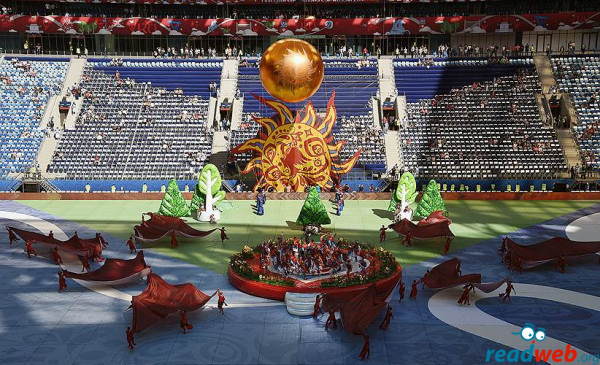
Project Brief:
To provide a range of giant inflatables that can be brought onto the football pitch in the Zenit stadium and take large weight bearing loads without damaging the grass, which is a strict requirement of FIFA. The inflatables were proposed as a lightweight alternative to metal and wood staging which was deemed to be too heavy for the pitch, as well as taking too long to install and take down before the game.
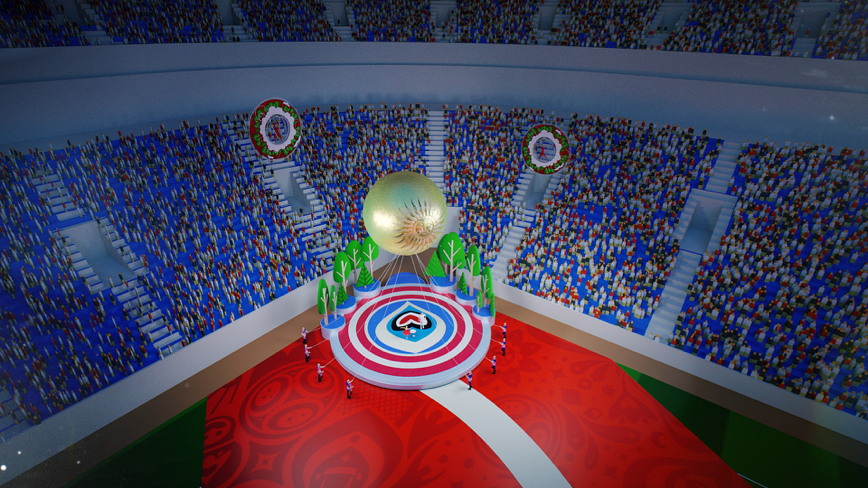
Technical Challenges:
To design, build and test various giant inflatables for the Opening Ceremony in St Petersburg in a very limited timeframe. The initial brief was given to us at the end of April 2017 and all inflatables had to be on site in time for rehearsals on 29th May, with the Opening event being 17th June.
To create giant inflatables as sealed units i.e no attached constant running fans for inflation, and thereby no cabling, so that the units can be pre-inflated and carried onto and off the pitch.
To create giant helium inflatables (7m dia sun and 12m diameter cloud) under which an acrobat can be harnessed; the inflatable will be walked onto the Field of Play by the technical team, with the acrobat completing acrobatics while suspended, before releasing him/herself from the harness and dropping onto the inflatable platform. The cloud and sun should therefore each be able to take a payload of c. 85kgs (acrobat + harness). In addition the cloud will have full surface coverage with tulle netting (to create fluffy effect) which has a payload of approx. 36kgs. The harness lines from the cloud/sun should be spread out and inbuilt into the structure so as to displace the payload such that failure of any one or multiple lines will not put the acrobat in danger.
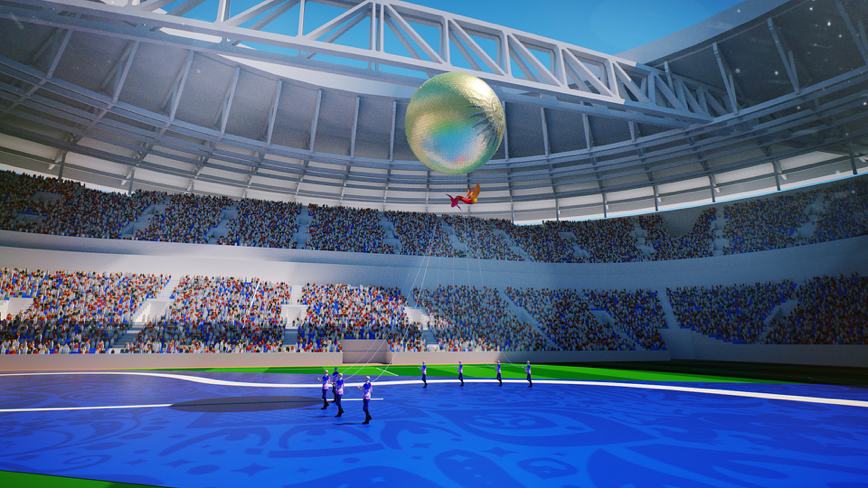
The main product is a 15m diameter platform designed to be inflated at the side of the football pitch, carried onto the Field of Play by a team of 24, and then danced on by acrobats before being moved off the pitch within a 20 minute deadline. It should therefore be sufficiently light for a team of 24 average men to lift and move a distance of max 50 yards. It should be sufficiently robust and durable to create a dancing platform which also has a slight spring in it for acrobatics.
In addition there will be various inflatable trees, coloured spheres to represent the flags of nations competing, and 2 giant inflatable 10m dia stadiums to represent actual Zenit and Kazan stadiums.
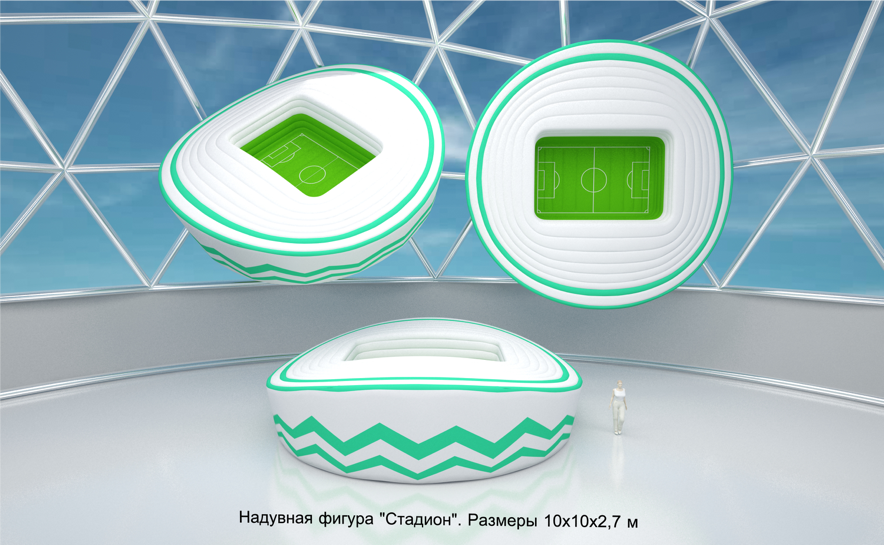
Prototyping:
An inflatable platform has never been done before to this size, whilst being entirely mobile and able to be inflated and deflated in a short timescale given. We did not know if a platform of that diameter would become convex when lifted or danced upon. The platform would have to be of a sufficient height to have enough volume of air inside it to take weight of dancers without being too high to climb on or exit off; It would need an internal structure which would stay rigid at the outer rim if danced upon whilst offering a flat top surface; grab handles would need to be strong enough to lift the weight of the whole structure without ripping away; it would need to inflate in no more than 1 hour and deflate within 20 minutes; as a sealed unit, keeping a steady internal pressure would be an issue as the air cannot be regulated. Over-inflation could burst the seams and internal ties, yet under-inflation would not provide the necessary rigidity for dancing. The unit would also be subject to heat expansion i.e in hot weather the air inside would expand and place pressure on the seams.
The printed platform cover would need to provide anti-slip grip and be removable.
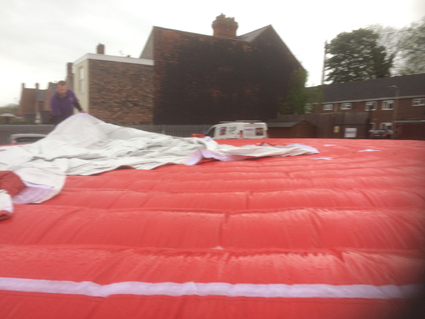
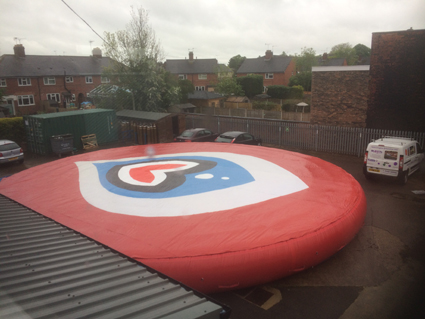
Without printed cover With printed cover
It was decided we would build a plywood dancefloor to sit on the platform surface and under the platform cover, providing rigidity to the surface without too much additional weight. The diameter was 11m. However this itself weighed around 700kg.
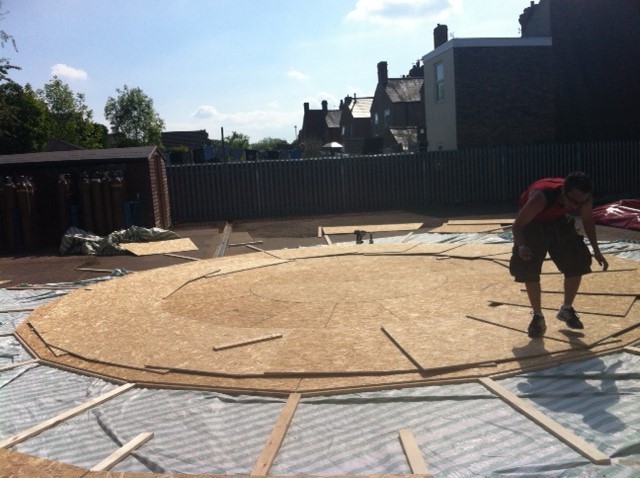
Plywood dancefloor under construction
The outer skin of the 7m sun is a gold fabric which had a full surface print on it. Printing red on gold did not produce the vibrant colour required (it came out grey) so this had to be over-painted by hand.
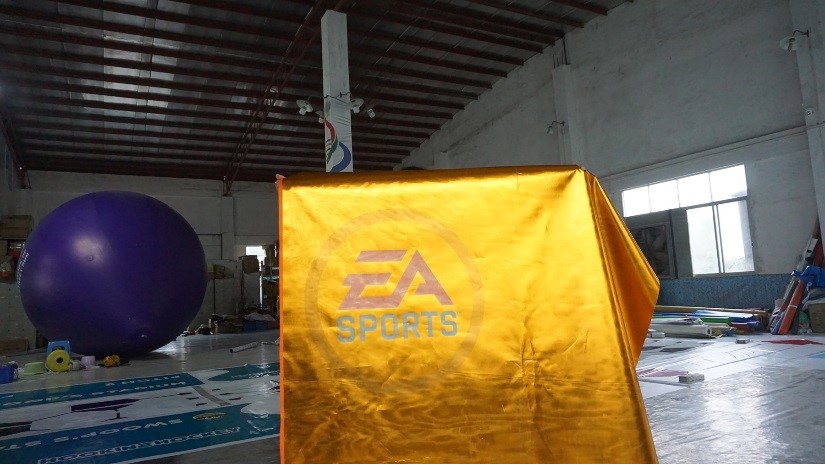
Test run of red print on gold
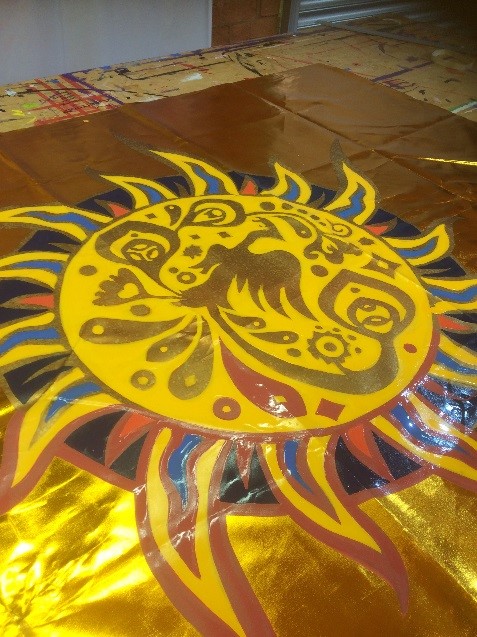
Effect of over-painting on test piece
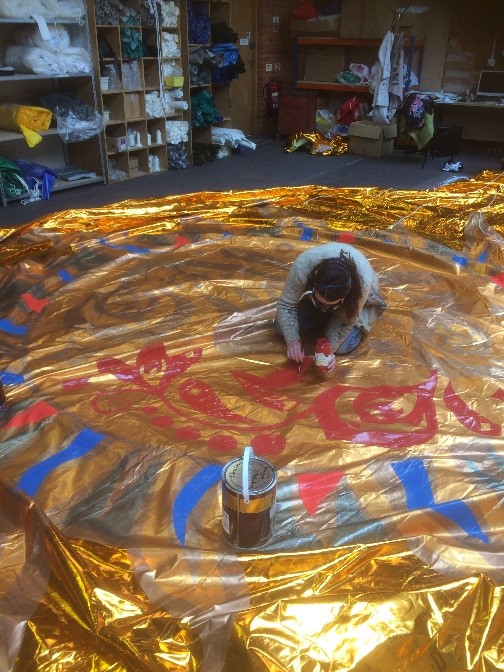
Over-painting on the final sphere
We produced back-ups of the 7m sun and 15m platform but due to its size and complexity there was not enough time to make a back-up cloud so based on the 8m cloud we made for London 2012 we proposed a size of 12m which we felt would give enough volume to take the weight of the acrobat.

Design Problems encountered
The first prototype platform did indeed burst at the centre area when left outside for 2 days in warm weather. The platform had been fully inflated but the air had expanded in warm weather and over pressurised the inflatable. This created a bulge in the centre where the internal seams had ruptured, which had to be repaired by cutting into the structure, stitching this up and over-glueing.
The 2nd back-up platform was re-designed with a strong 0.9mm removable tarpaulin inner ring (where the bulge had previously been on the first design) and a 0.50mm outer ring.
Final Shots in the stadium
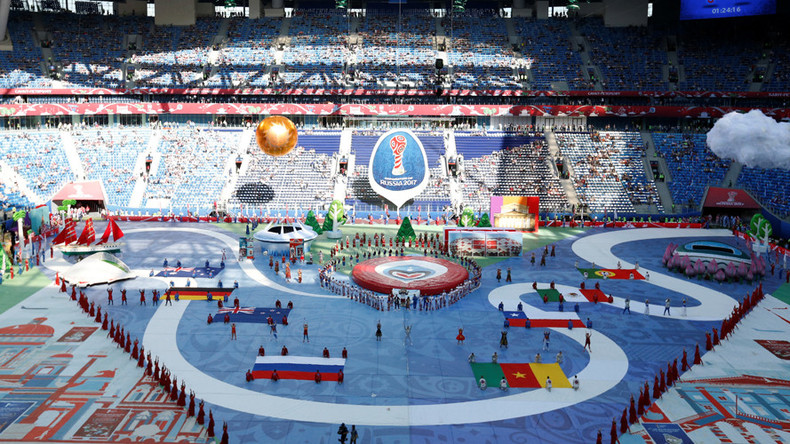
Send Enquiry